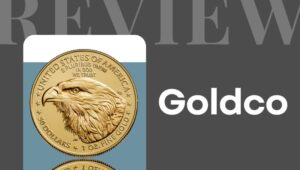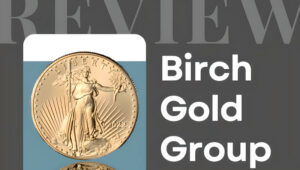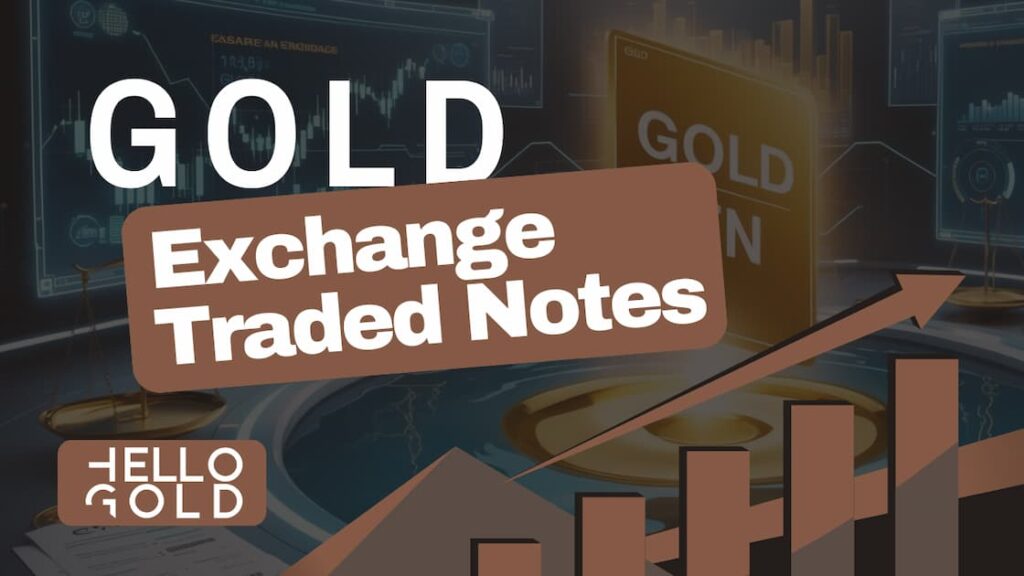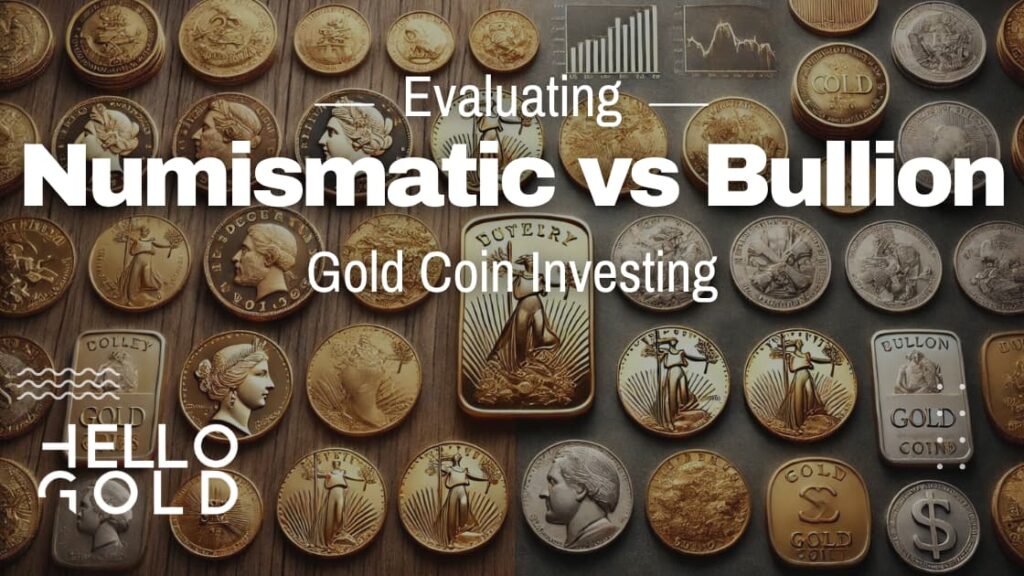Gold ETFs let you put money into gold without having real gold bars. These funds follow gold prices, allowing your investments to benefit from changes in the value of gold.
If you want to spread out your investments beyond regular stocks and property, Gold ETFs are worth checking out.
This article clarifies how Gold ETFs work and shows top funds to think about for your investing aims.
Gold ETFs 101: Your Ticket to the Gold Rush
Gold has long been a symbol of wealth and security, and now, with the rise of Gold ETFs, getting into this timeless asset has never been easier. Whether you’re looking to protect your wealth or spread out your investments, Gold ETFs offer a handy and efficient way to tap into the lasting value of gold without the hassles of owning it physically.
What Are Gold ETFs and Why Should You Care?
Gold ETFs, or Exchange-Traded Funds, are investment tools designed to follow the price of gold.
They come in two main types: those holding real gold in secure vaults and those using futures contracts to mirror gold prices.
Each share of a Gold ETF stands for a fraction of an ounce of gold, allowing for exact investment amounts.
The appeal of Gold ETFs lies in their ability to solve common problems linked to owning gold:
- Accessibility: You can buy and sell shares as easily as trading stocks, removing the need for physical storage.
- Liquidity: Gold ETFs are easy to sell, allowing for quick conversion to cash when needed.
- Cost-efficiency: They cut out storage fees, insurance costs, and authentication expenses linked to physical gold.
- Precision: The ability to invest in fractional shares allows for more accurate portfolio balancing.
To put this in perspective, consider how Gold ETFs stack up against traditional ways of investing in gold.
When you invest in gold coins or bars, you need to worry about secure storage, insurance, and proper authentication. These physical assets are also harder to sell and often cost more than the current gold price, making them a more cumbersome option.
Gold jewelry, while popular, typically costs much more than its gold value, is less pure than investment-grade gold, and can be hard to value accurately.
Gold ETFs offer a simpler approach. They are easily traded on the market, eliminating concerns about secure storage, and they closely follow the current price of gold.
This mix of convenience, cost-efficiency, and precision explains why Gold ETFs have become an increasingly attractive choice for investors looking to get into gold without the logistical hurdles of owning the metal outright.
The Golden Age of ETFs: Why They’re Booming
The growth of Gold ETFs isn’t just hype – it’s backed by impressive market data.
For instance, the SPDR Gold Shares (GLD), one of the largest Gold ETFs, boasts an impressive $65.1 billion in assets under management as of August 7, 2024.
This big number reflects the increasing trust investors place in these instruments.
Several factors are driving the rapid growth of Gold ETFs in today’s market:
Technological Integration
Gold ETFs fit smoothly with modern trading platforms. This allows for real-time monitoring, automated buying strategies, and inclusion in robo-advisor portfolios.
Economic Hedge
Gold ETFs have proven effective in protecting against economic uncertainty and inflation. During market downturns, gold often performs opposite to stocks, potentially providing portfolio stability.
Performance During Crises
Gold ETFs have shown resilience during economic troubles. For example, during significant market downturns, while many traditional assets saw declines, gold prices often surged, showcasing the metal’s safe-haven status.
Low Barrier to Entry
Many Gold ETFs allow investors to start with a single share, making them accessible to a wide range of investors.
Transparency
Most Gold ETFs provide daily holdings reports, offering a level of openness rarely seen in other gold investments.
This combination of accessibility, technological integration, and historical performance as a safe-haven asset makes Gold ETFs an increasingly attractive option for those looking to diversify their investment strategy.
Gold ETFs vs. Physical Gold: Which Is the Smarter Move?
When thinking about gold as a different kind of investment, you have to make an important choice: Gold ETFs or physical gold?
Both options let you invest in this precious metal, but they each have their own good and bad points. Understanding these differences is key to making a smart choice that fits your investment goals and how much risk you’re okay with.
The Advantages of Gold ETFs
Easy to Buy and Sell
Gold ETFs trade on major stock exchanges, making them very easy to buy and sell.
You can buy or sell shares quickly during market hours, giving you flexibility that physical gold can’t match.
This ease of trading is especially useful during times when the market is shaky or when you need to quickly change your investments.
Cost-Effective Ownership
Investing in Gold ETFs gets rid of the big costs that come with owning physical gold, like safe storage and insurance.
While Gold ETFs do have management fees, these are usually lower than the costs of owning physical gold. For example, storing physical gold can cost between 0.5% to 2% of its value each year, while many Gold ETFs have yearly fees below 0.5%.
Buying Small Amounts
Gold ETFs let you invest exact amounts, even parts of shares. This flexibility is good for putting specific amounts into different investments or investing a set amount regularly over time.
If gold is trading at $2,000 per ounce, you could invest $200 to own 0.1 shares of a Gold ETF representing one ounce of gold.
Clear Information
Most Gold ETFs give daily reports on what they own, providing a transparency that’s rarely seen in physical gold investments. This regular reporting lets you accurately track how your investment is doing and make smart choices based on up-to-date information.
Tax Benefits
Gold ETFs can be easily put into tax-advantaged accounts like IRAs. This feature can offer big tax benefits compared to physical gold investments, which are usually treated as collectibles and taxed at a higher rate when held in an IRA.
The Drawbacks of Gold ETFs
No Physical Possession
With Gold ETFs, you don’t have the actual gold in your hands. For some investors, the comfort of holding physical gold is important, and ETFs can’t give you that.
It’s important to think about whether having the actual gold matters for your investment plan.
Management Fees
While Gold ETFs get rid of storage and insurance costs, they do have management fees. These yearly fees, usually between 0.25% to 0.40%, can affect your returns over time, especially if you hold them for a long time.
It’s important to include these ongoing costs in your investment calculations.
Trust in Others
Investing in Gold ETFs means trusting the company that runs the fund and the one that keeps the gold safe. If these companies have money problems, it could possibly affect your investment.
While this risk is usually low with well-known providers, it’s something that doesn’t exist when you own physical gold.
It’s important to check the ETF provider’s history and financial health.
Tracking Differences
Gold ETFs try to match gold prices, but they might not always perfectly follow the metal’s value.
Things like management fees, trading costs, and market conditions can lead to small differences between how the ETF performs and actual gold prices.
Over short periods, these differences are usually tiny, but they can add up over time.
Market Mood Influence
Unlike physical gold, the price of Gold ETF shares can be affected by how people feel about the market.
This means that during periods of heightened market anxiety, the ETF price might briefly be different from the actual price of gold.
While this doesn’t happen often, it shows the difference between owning a financial product and the actual gold.
To help you make a smart choice, look at this comparison table:
When deciding between Gold ETFs and physical gold, think about your investment goals, your comfort level with market fluctuations, and what you practically need.
If you value being able to buy and sell easily, low costs, and easy management, Gold ETFs offer good advantages. They’re especially good for investors who want to invest in gold prices without the hassle of owning actual gold.
On the other hand, if you prefer having a real asset and don’t mind the extra responsibilities and costs, physical gold might be more appealing. Some investors choose to have both, using the good points of each approach.
Remember, the key to successful alternative investing isn’t just choosing between options, but understanding how each fits into your overall money plan. Whether you go for the modern ease of Gold ETFs or the timeless realness of physical gold, make sure your choice fits with your long-term investment goals and how you manage risk.
Your Golden Ticket: Top 5 Gold ETFs for Newbies
Gold ETFs stand out as an attractive avenue for investors aiming to diversify their portfolios. These investment tools offer a way to gain exposure to gold’s market performance without the complexities of physical ownership.
Let’s look at five top Gold ETFs, each with unique features that suit different investor needs.
SPDR Gold Shares (GLD): The Gold Standard
SPDR Gold Shares (GLD) holds a key spot in the Gold ETF market as the first of its kind in the U.S. Its structure is simple: each share represents a fraction of the precious metal’s weight, making it easy to track your investment.
GLD’s expense ratio is 0.40%. While higher than some others, this fee is justified by the fund’s unmatched liquidity and tight bid-ask spreads.
These features ensure easy buying and selling of shares without big price changes – a key factor for those who may need to adjust their positions often.
The fund’s gold holdings are kept in secure vaults and checked regularly. This physical backing provides a real aspect to your investment, which can be reassuring for those new to ETF investing.
For tech-savvy investors, GLD offers robust online tools and mobile app integration, allowing for real-time tracking and easy portfolio management.
It’s important to note that like all investments, GLD carries risks.
The fund’s performance is directly tied to gold prices, which can change quickly. Also, as an ETF, it’s subject to market trading risks and may trade at a higher or lower price than its net asset value.
iShares Gold Trust (IAU): The Cost-Effective Contender
iShares Gold Trust (IAU) offers a more cost-effective option for long-term gold investment. With an expense ratio of 0.25%, IAU offers big savings compared to GLD, especially for those planning to hold their investment for a long time.
IAU was founded in 2005 and is listed on NYSE Arca under the ticker symbol IAU. As of December 31, 2023, it had net assets under management of about $26.425 billion, positioning it among the top-tier Gold ETFs in terms of market size.
A unique feature of IAU is its smaller share price. Each share corresponds to a fraction of physical gold, allowing for more precise portfolio adjustments.
This detail can be particularly useful for fine-tuning investment strategies or implementing dollar-cost averaging into gold.
IAU also boasts impressive liquidity, with high daily trading volumes ensuring that investors can buy or sell easily. This liquidity is crucial for investors seeking flexibility in managing their portfolios more often.
While IAU’s lower fees can lead to better long-term performance, investors should know that the fund still carries similar risks to other Gold ETFs, including exposure to gold price changes and potential tracking errors.
Aberdeen Standard Physical Gold Shares ETF (SGOL): The Global Player
Aberdeen Standard Physical Gold Shares ETF (SGOL) offers a unique option for globally-minded investors. SGOL stores its gold bars in secure vaults located in London, UK, which are checked twice a year by Inspectorate International Limited.
As of April 26, 2024, SGOL managed $3.159 billion in assets. Its expense ratio of 0.17% makes it one of the more cost-effective options in the Gold ETF space, potentially leading to better long-term returns for investors.
SGOL’s performance has been solid, with a one-year return of 12.04% and a five-year return of 60.50% as of our last data point. These figures show the fund’s ability to effectively track gold prices over different time periods.
A standout feature of SGOL is its commitment to transparency. The fund provides detailed performance metrics including MTD, QTD, and YTD returns, and aims to reflect the performance of the LBMA Gold Price PM Index.
Investors should note that SGOL’s international focus may expose it to additional currency risks and potential rule changes in the UK.
GraniteShares Gold Trust (BAR): The New Kid on the Block
GraniteShares Gold Trust (BAR) has quickly gained popularity thanks to its innovative approach and competitive fee structure. While specific expense ratio data is not available, BAR is known for its industry-leading low fees, making it an attractive option for cost-conscious investors looking to maximize their returns.
BAR’s structure involves ICBC Standard Bank Plc acting as the custodian, responsible for securely holding the physical gold.
The Bank of New York Mellon serves as the trustee, ensuring compliance with trust agreements and performing daily checks to confirm gold holdings.
This dual-layer oversight provides an extra level of security for your investment.
For tech-savvy investors, BAR offers modern, user-friendly interfaces for tracking your investment and works well with various investment apps and platforms.
Despite its advantages, BAR’s relatively recent entry into the market means it has a shorter track record compared to more established ETFs. Investors should watch its performance and growth closely.
VanEck Merk Gold Trust (OUNZ): The Convertible Option
VanEck Merk Gold Trust (OUNZ) stands out with a unique feature: gold convertibility. This ETF allows investors to exchange their shares for physical gold, providing a level of flexibility not seen in most other Gold ETFs.
While OUNZ’s performance and fee structure are similar to other Gold ETFs, its convertibility feature sets it apart. This option can be particularly appealing to investors who want the liquidity of an ETF with the potential to own physical gold in the future.
The process of converting OUNZ shares to physical gold is straightforward, though it does involve some fees and minimum quantity requirements. Typically, redemption units are in large amounts, usually around 50,000 shares per unit.
Investors should be aware that the convertibility feature may impact the fund’s expense ratio and performance. The process of converting to physical gold can be complex and may have tax implications.
From Techie to Gold Bug: Getting Started with Gold ETFs
Gold ETFs offer a unique chance to spread out investment portfolios beyond traditional options. These investment tools combine the stability of precious metals with the ease of digital trading platforms, presenting a compelling option for investors looking to broaden their financial strategies.
Choosing Your Digital Gold Dealer: Picking the Right Brokerage
Picking the right brokerage is key for successful Gold ETF investing. Here are important factors to think about:
Fees
Look for competitive commission rates and low expense ratios. For example, popular Gold ETFs like GLD and IAU have expense ratios of 0.40% and 0.25% respectively.
User Interface
A clean, easy-to-use interface with customizable dashboards and real-time data visualization can greatly improve your trading experience.
Research Tools
Complete research and analysis tools, including real-time data feeds and advanced charting abilities, are essential for making informed decisions.
Mobile Accessibility
In today’s fast-moving market, a powerful mobile app with features like push notifications for price alerts and complex trade execution is very valuable.
Data Management
Look for platforms that offer easy data export and potentially API access for custom integrations.
When comparing brokerages specifically for Gold ETF investments, pay attention to:
- The range of Gold ETFs available
- Any specific fees related to ETF trades
- The quality of their precious metals research and analysis tools
- Real-time data and analytics abilities for gold and related markets
It’s crucial to choose a brokerage that fits with your investment goals and trading style. Take the time to thoroughly research and compare options before making a decision.
Your First Gold ETF Purchase: A Step-by-Step Guide
Once you’ve selected a brokerage, here’s a complete guide to making your first Gold ETF purchase:
1. Set Up Your Account:
- Complete the online account opening process with your chosen brokerage.
- Prepare necessary documentation (ID, social security number, employment details).
- Fund your account via bank transfer or wire.
2. Research and Select Your Gold ETF:
- Compare popular options like GLD, IAU, or SGOL.
- Consider factors like expense ratios, trading volume, and tracking accuracy.
- Analyze historical data to understand each ETF’s performance relative to gold prices.
3. Place Your Trade:
- Log into your brokerage account.
- Navigate to the trading section and enter the ETF’s ticker symbol.
- Decide on the number of shares or dollar amount you want to invest.
- Choose your order type (explained below).
- Review and confirm your order.
4. Understanding Order Types:
- Market Order: Executes immediately at the best available price.
- Limit Order: Sets a maximum (for buying) or minimum (for selling) price for your trade.
- Stop-Loss Order: Automatically sells if the ETF price falls below a certain level.
- Trailing Stop Order: Adjusts the stop price at a fixed percentage below the market price.
For beginners, limit orders can provide more control over your entry price. As you gain experience, you might explore more complex order types to improve your trading strategy.
5. Monitor Your Investment:
- Regularly review your Gold ETF’s performance.
- Consider setting up alerts for significant price movements.
- Analyze your investment in the context of your overall portfolio strategy.
- Study trends and connections between gold prices and other economic indicators.
It’s crucial for potential buyers to recognize that Gold ETFs, like all investments, carry risks. These can include market ups and downs, currency risks, and potential tracking errors.
Always consider these factors when evaluating your broader investment goals and risk comfort level.
The bid-ask spread, which is the difference between the highest buy and lowest sell prices, can impact your trading costs. Always check this spread before placing an order, especially for less liquid ETFs.
As you become more comfortable with Gold ETF trading, consider exploring more advanced strategies:
- Dollar-Cost Averaging: Set up automated regular investments to smooth out price changes over time.
- Rebalancing: Determine the best times to rebalance your portfolio, maintaining your desired gold exposure.
- Correlation Analysis: Study how gold prices relate to other assets in your portfolio to optimize your overall risk-return profile.
Striking Gold: Maximizing Your ETF Investment
Gold ETFs have made it much easier to invest in this long-valued asset, offering a simple way to include gold in an investment portfolio.
However, effectively adding Gold ETFs into a broader investment plan requires careful thought and ongoing management.
This section explores key aspects of getting the most out of Gold ETF investments.
The Golden Ratio: Balancing Gold ETFs in Your Portfolio
Gold plays a crucial role in a varied investment strategy due to its historically low connection with stocks. This feature allows gold to potentially steady a portfolio during market downturns.
While there’s no one-size-fits-all approach, many financial experts suggest considering a gold allocation between 5% to 10% of a portfolio.
Deciding on the right allocation depends on several factors, including your personal tolerance for market fluctuations, your investment timeline, and your overall portfolio mix.
For investors willing to embrace more volatility, a lower gold allocation might be suitable, while those who prefer a more conservative approach may lean towards the higher end of the range.
Also, longer-term investment goals often justify a higher gold allocation, given gold’s history as a store of value. Furthermore, gold can complement growth-focused assets, potentially providing protection against market swings.
For example, an investor with a portfolio heavily weighted towards volatile tech stocks might consider putting 7-8% into Gold ETFs such as SPDR Gold Shares (GLD) or iShares Gold Trust (IAU). This allocation could serve as a potential stabilizer during rough market periods.
Keeping Your Gold Polished: Monitoring and Rebalancing
Effective management of Gold ETF investments requires regular checking and strategic rebalancing to ensure the best performance.
One key metric to watch is the Net Asset Value (NAV), which should be compared to the ETF’s market price to spot potential buying or selling opportunities.
Also, understanding the premium or discount to NAV is essential; a significant premium might indicate an overpriced ETF, while a discount could present a chance to buy at a lower price.
Tracking error is another critical factor, measuring how closely the ETF follows the price of gold. For instance, recent data showed that the iShares Gold Trust (IAU) had a total return of 21.59%, closely matching its benchmark’s 21.89%, indicating minimal tracking error.
When it comes to rebalancing, it’s important to consider the tax implications associated with Gold ETFs.
These investments are typically taxed as collectibles, with long-term gains subject to a 28% tax rate, which is higher than the capital gains rate applied to most stocks.
This higher tax rate requires careful consideration of tax-efficient rebalancing strategies to minimize tax bills.
For those who are comfortable with technology, various digital tools can simplify the monitoring process. Platforms like Personal Capital or Morningstar offer portfolio analysis tools that can track Gold ETF performance alongside other investments, helping investors maintain a balanced and optimized portfolio.
Avoiding Fool’s Gold: Common Mistakes in Gold ETF Investing
Even experienced investors can fall prey to common pitfalls in the world of gold-backed funds. Here are key mistakes to avoid:
1. Over-allocation
While gold can be a valuable portfolio component, exceeding the recommended allocation can potentially expose a portfolio to unnecessary risk.
2. Market Timing
Trying to predict short-term gold price movements often leads to poor results. Historical data suggests that even professional traders struggle to consistently time the gold market effectively.
3. Misunderstanding Tax Implications
Failing to account for the higher tax rate on long-term gains can lead to unexpected tax bills. It’s essential to factor in the 28% collectibles tax rate when calculating potential returns.
4. Improper Use of Leveraged or Inverse ETFs
These complex instruments are designed for short-term trading, not long-term investing. A 2x leveraged Gold ETF held for a year will not necessarily deliver twice the return of gold over that period due to the effects of daily rebalancing.
5. Ignoring Expense Ratios
While Gold ETFs generally have lower fees than actively managed funds, expenses can still impact returns. For instance, the expense ratio for GLD is 0.40%, while IAU charges 0.25%.
Over time, this difference can significantly affect overall returns.
Smart Strategies for Success
To potentially enhance Gold ETF investments, consider implementing these strategies:
1. Dollar-Cost Averaging
This approach involves investing a fixed amount at regular intervals, regardless of price changes. It can help lessen the impact of short-term volatility and reduce the risk of making large investments at bad times.
2. Stay Informed
Keep up with gold market trends and economic factors influencing prices. Pay attention to inflation rates, currency changes, and world events that can impact gold prices.
3. Regular Review and Adjustment
As with any investment, regularly review your Gold ETF strategy and adjust as needed. Changes in personal financial goals, risk tolerance, or market conditions may require portfolio rebalancing.
4. Understand the Underlying Assets
Not all Gold ETFs are created equal. Some, like GLD and IAU, hold physical gold, while others may use futures contracts or invest in gold mining companies.
Understanding these differences is crucial for matching investments with specific goals and risk tolerance.
By avoiding common pitfalls and implementing these strategies, investors can potentially boost their returns and better integrate Gold ETFs into their overall investment approach. Remember, successful Gold ETF investing is not about chasing quick gains, but rather about strategic, long-term portfolio management aligned with broader financial goals.
Summing Up
Gold ETFs make gold investing easy. They’re easy to trade, cost less than physical gold, and can protect your wealth when times are uncertain.
Research top funds like SPDR Gold Shares or iShares Gold Trust. Choose a good brokerage and put 5-10% of your portfolio into Gold ETFs.
Buy your first shares, then check and fix your investment as needed. Start now to improve your financial security with Gold ETFs.











